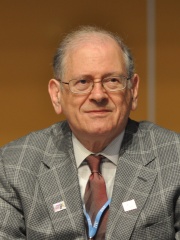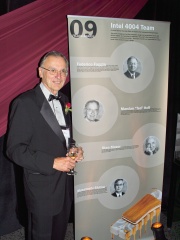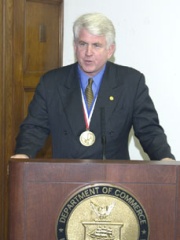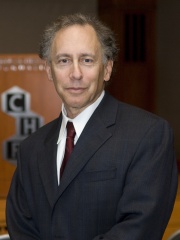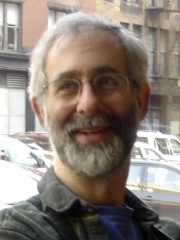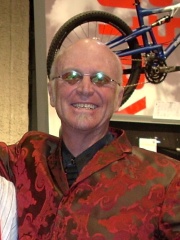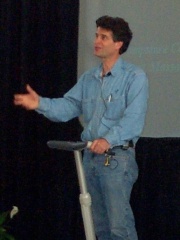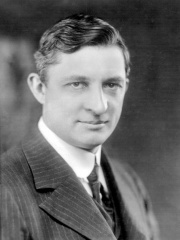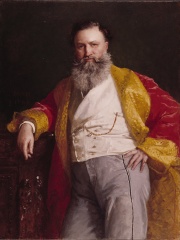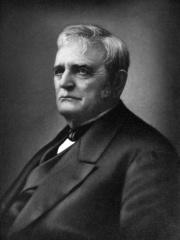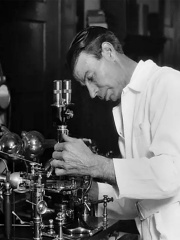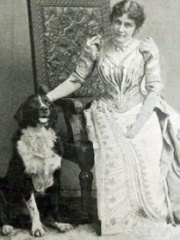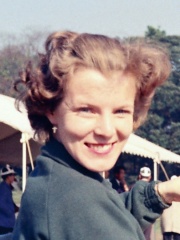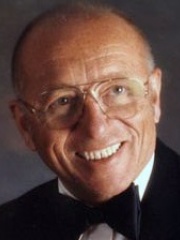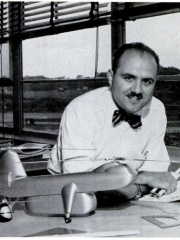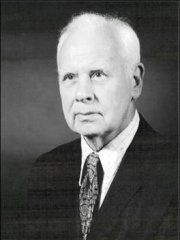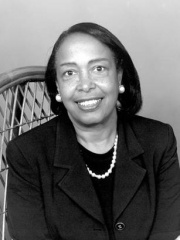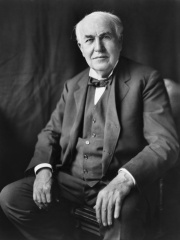
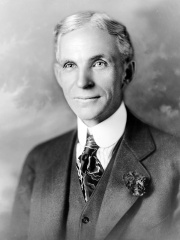
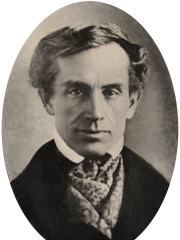

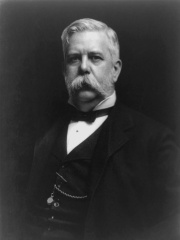
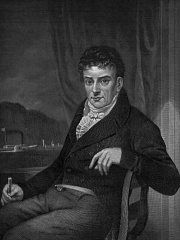

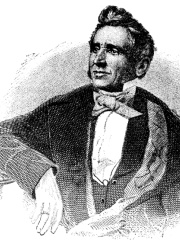
The Most Famous
INVENTORS from United States
This page contains a list of the greatest American Inventors. The pantheon dataset contains 354 Inventors, 118 of which were born in United States. This makes United States the birth place of the most number of Inventors.
Top 10
The following people are considered by Pantheon to be the top 10 most legendary American Inventors of all time. This list of famous American Inventors is sorted by HPI (Historical Popularity Index), a metric that aggregates information on a biography’s online popularity. Visit the rankings page to view the entire list of American Inventors.

1. Thomas Edison (1847 - 1931)
With an HPI of 90.99, Thomas Edison is the most famous American Inventor. His biography has been translated into 176 different languages on wikipedia.
Thomas Alva Edison (February 11, 1847 – October 18, 1931) was an American inventor and businessman. He developed many devices in fields such as electric power generation, mass communication, sound recording, and motion pictures. These inventions, which include the phonograph, the motion picture camera, and early versions of the electric light bulb, have had a widespread impact on the modern industrialized world. He was one of the first inventors to apply the principles of organized science and teamwork to the process of invention, working with many researchers and employees. He established the first industrial research laboratory. Edison was raised in the American Midwest. Early in his career he worked as a telegraph operator, which inspired some of his earliest inventions. In 1876, he established his first laboratory facility in Menlo Park, New Jersey, where many of his early inventions were developed. He later established a botanical laboratory in Fort Myers, Florida, in collaboration with businessmen Henry Ford and Harvey S. Firestone, and a laboratory in West Orange, New Jersey, that featured the world's first film studio, the Black Maria. With 1,093 US patents in his name, as well as patents in other countries, Edison is regarded as the most prolific inventor in American history. Edison married twice and fathered six children. He died in 1931 due to complications from diabetes.

2. Henry Ford (1863 - 1947)
With an HPI of 80.48, Henry Ford is the 2nd most famous American Inventor. His biography has been translated into 139 different languages.
Henry Ford (July 30, 1863 – April 7, 1947) was an American industrialist and business magnate. As founder of the Ford Motor Company, he is credited as a pioneer in making automobiles affordable for middle-class Americans through the Fordism system. In 1911, he was awarded a patent for the transmission mechanism that would be used in the Model T and other automobiles. Ford was born in a farmhouse in Michigan's Springwells Township, leaving home at age 16 to find work in Detroit. It was a few years before this time that Ford first experienced automobiles, and throughout the later half of the 1880s, Ford began repairing and later constructing engines, and through the 1890s worked with a division of Edison Electric. He officially founded the Ford Motor Company in 1903, after prior failures in business but success in constructing automobiles. Ford's 1908 introduction of the Model T automobile is credited with having revolutionized both transportation and American industry. As the Ford Motor Company sole owner, "he became one of the richest and best-known people in the world." Aside from "Fordism", Ford was also among the pioneers of the five-day workweek. Ford believed that consumerism was a key to global peace. His commitment to systematically lowering costs resulted in many technical and business innovations, including a franchise system that put dealerships throughout North America and major cities on six continents. Ford was known for his pacifism during the first years of World War I, although during the war his company became a major supplier of weapons. He promoted the League of Nations. In the 1920s Ford promoted antisemitism through his newspaper The Dearborn Independent and the book The International Jew. He opposed United States entry into World War II, and served for a time on the America First Committee board. After his son Edsel died in 1943, Ford resumed control of the company but was too frail to make decisions and quickly came under the control of subordinates. He turned over the company to his grandson Henry Ford II in 1945. He died in 1947 after leaving most of his wealth to the Ford Foundation, and control of the company to his family.

3. Samuel Morse (1791 - 1872)
With an HPI of 76.69, Samuel Morse is the 3rd most famous American Inventor. His biography has been translated into 87 different languages.
Samuel Finley Breese Morse (April 27, 1791 – April 2, 1872) was an American inventor and painter. After having established his reputation as a portrait painter, in his middle age Morse contributed to the invention of a single-wire telegraph system based on European telegraphs. He was a co-developer of Morse code in 1837 and helped to develop the commercial use of telegraphy.

4. Samuel Colt (1814 - 1862)
With an HPI of 72.01, Samuel Colt is the 4th most famous American Inventor. His biography has been translated into 64 different languages.
Samuel Colt (; July 19, 1814 – January 10, 1862) was an American inventor, industrialist, and businessman who established Colt's Patent Fire-Arms Manufacturing Company (now Colt's Manufacturing Company) and made the mass production of revolvers commercially viable. Colt's first two business ventures were producing firearms in Paterson, New Jersey, and making underwater mines; both ended in disappointment. His business affairs improved rapidly after 1847, when the Texas Rangers ordered 1,000 revolvers during the American war with Mexico. Later, his firearms were used widely during the settling of the western frontier. Colt died in 1862 as one of the wealthiest men in America. Colt's manufacturing methods were sophisticated. His use of interchangeable parts helped him become one of the first to use the assembly line efficiently. Moreover, his innovative use of art, celebrity endorsements, and corporate gifts to promote his wares made him a pioneer of advertising, product placement, and mass marketing.
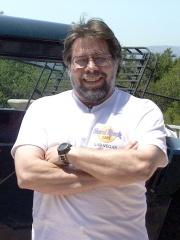
5. Steve Wozniak (1950 - )
With an HPI of 70.31, Steve Wozniak is the 5th most famous American Inventor. His biography has been translated into 79 different languages.
Stephen Gary Wozniak (; born August 11, 1950), also known by his nickname "Woz", is an American electrical engineer, computer programmer, philanthropist, and inventor. In 1976, he co-founded Apple Computer with his early business partner Steve Jobs. Through his work at Apple in the 1970s and 1980s, he is widely recognized as one of the most prominent pioneers of the personal computer revolution. In 1975, Wozniak started developing the Apple I: 150 into the computer that launched Apple when he and Jobs first began marketing it the following year. He primarily designed the Apple II, introduced in 1977, known as one of the first highly successful mass-produced microcomputers, while Jobs oversaw the development of its foam-molded plastic case and early Apple employee Rod Holt developed its switching power supply. With human–computer interface expert Jef Raskin, Wozniak had a major influence over the initial development of the original Apple Macintosh concepts from 1979 to 1981, when Jobs took over the project following Wozniak's brief departure from the company due to a traumatic airplane accident. After permanently leaving Apple in 1985, Wozniak founded CL 9 and created the first programmable universal remote, released in 1987. He then pursued several other businesses and philanthropic ventures throughout his career, focusing largely on technology in K–12 schools. As of February 2020, Wozniak has remained an employee of Apple in a ceremonial capacity since stepping down in 1985. In recent years, he has helped fund multiple entrepreneurial efforts dealing in areas such as GPS and telecommunications, flash memory, technology and pop culture conventions, technical education, ecology, satellites and more.

6. George Westinghouse (1846 - 1914)
With an HPI of 70.02, George Westinghouse is the 6th most famous American Inventor. His biography has been translated into 49 different languages.
George Westinghouse Jr. (October 6, 1846 – March 12, 1914) was an American entrepreneur and engineer based in Pennsylvania who created the railway air brake and was a pioneer of the electrical industry, receiving his first patent at the age of 19. Westinghouse saw the potential of using alternating current for electric power distribution in the early 1880s and put all his resources into developing and marketing it. This put Westinghouse's business in direct competition with Thomas Edison, who marketed direct current for electric power distribution. In 1911 Westinghouse received the American Institute of Electrical Engineers's (AIEE) Edison Medal "For meritorious achievement in connection with the development of the alternating current system". He founded the Westinghouse Electric Corporation in 1886.

7. Robert Fulton (1765 - 1815)
With an HPI of 69.85, Robert Fulton is the 7th most famous American Inventor. His biography has been translated into 58 different languages.
Robert Fulton (November 14, 1765 – February 24, 1815) was an American engineer and inventor who is widely credited with developing the world's first commercially successful steamboat, the North River Steamboat (also known as Clermont). In 1807, that steamboat traveled on the Hudson River with passengers from New York City to Albany and back again, a round trip of 300 nautical miles (560 kilometers), in 62 hours. The success of his steamboat changed river traffic and trade on major American rivers. In 1800, Fulton had been commissioned by Napoleon Bonaparte, leader of France, to attempt to design a submarine; he then produced Nautilus, the first practical submarine in history. Fulton is also credited with inventing some of the world's earliest naval torpedoes for use by the Royal Navy. Fulton became interested in steam engines and the idea of steamboats in 1777 when he was around age 12 and visited state delegate William Henry of Lancaster, Pennsylvania, who was interested in this topic. Henry had learned about inventor James Watt and his Watt steam engine on an earlier visit to England.

8. Herman Hollerith (1860 - 1929)
With an HPI of 68.81, Herman Hollerith is the 8th most famous American Inventor. His biography has been translated into 56 different languages.
Herman Hollerith (February 29, 1860 – November 17, 1929) was a German-American statistician, inventor, and businessman who developed an electromechanical tabulating machine for punched cards to assist in summarizing information and, later, in accounting. His invention of the punched card tabulating machine, patented in 1884, marks the beginning of the era of mechanized binary code and semiautomatic data processing systems, and his concept dominated that landscape for nearly a century.Hollerith founded a company that was amalgamated in 1911 with several other companies to form the Computing-Tabulating-Recording Company. In 1924, the company was renamed "International Business Machines" (IBM) and became one of the largest and most successful companies of the 20th century. Hollerith is regarded as one of the seminal figures in the development of data processing.

9. Charles Goodyear (1800 - 1860)
With an HPI of 68.17, Charles Goodyear is the 9th most famous American Inventor. His biography has been translated into 49 different languages.
Charles Goodyear (December 29, 1800 – July 1, 1860) was an American self-taught chemist and manufacturing engineer who developed vulcanized rubber, for which he received patent number 3633 from the United States Patent Office on June 15, 1844.Goodyear is credited with inventing the chemical process to create and manufacture pliable, waterproof, moldable rubber.Goodyear's discovery of the vulcanization process followed five years of searching for a more stable rubber and stumbling upon the effectiveness of heating after Thomas Hancock. His discovery initiated decades of successful rubber manufacturing in the Lower Naugatuck Valley in Connecticut, as rubber was adopted to multiple applications, including footwear and tires. The Goodyear Tire and Rubber Company is named after (though not founded by) him.
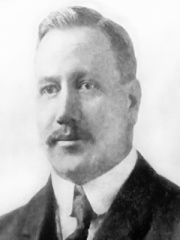
10. William G. Morgan (1870 - 1942)
With an HPI of 67.73, William G. Morgan is the 10th most famous American Inventor. His biography has been translated into 36 different languages.
William George Morgan (January 23, 1870 – December 27, 1942) was the inventor of volleyball, originally called "Mintonette", a name derived from the game of badminton which he later agreed to change to better reflect the nature of the sport. He was born in Lockport, New York, U.S. He met James Naismith, inventor of basketball, while Morgan was studying at Springfield College in 1892. Like Naismith, Morgan pursued a career in Physical Education at the YMCA. Influenced by Naismith and basketball, in 1895, in Holyoke, Massachusetts, Morgan invented "Mintonette" a less vigorous team sport more suitable for older members of the YMCA but one that still required athletic skill. Later Alfred S. Halstead watched it being played and renamed it "Volleyball". In 1985, he was inducted into the Volleyball Hall of Fame as the inaugural member.
Pantheon has 118 people classified as inventors born between 1742 and 1997. Of these 118, 18 (15.25%) of them are still alive today. The most famous living inventors include Steve Wozniak, Jimmy Wales, and Bob Kahn. The most famous deceased inventors include Thomas Edison, Henry Ford, and Samuel Morse. As of April 2022, 15 new inventors have been added to Pantheon including Garrett Morgan, Royal Rife, and Eunice Newton Foote.
Living Inventors
Go to all Rankings
Steve Wozniak
1950 - Present
HPI: 70.31
Jimmy Wales
1966 - Present
HPI: 64.94
Bob Kahn
1938 - Present
HPI: 61.53
Larry Sanger
1968 - Present
HPI: 53.58
Marcian Hoff
1937 - Present
HPI: 52.97
Robert Metcalfe
1946 - Present
HPI: 50.61
Lynn Conway
1938 - Present
HPI: 47.57
Robert S. Langer
1948 - Present
HPI: 46.80
Dan Bricklin
1951 - Present
HPI: 45.08
Gary Fisher
1950 - Present
HPI: 44.82
Dean Kamen
1951 - Present
HPI: 43.69
Elizabeth Holmes
1984 - Present
HPI: 43.29

Deceased Inventors
Go to all Rankings
Thomas Edison
1847 - 1931
HPI: 90.99
Henry Ford
1863 - 1947
HPI: 80.48
Samuel Morse
1791 - 1872
HPI: 76.69
Samuel Colt
1814 - 1862
HPI: 72.01
George Westinghouse
1846 - 1914
HPI: 70.02
Robert Fulton
1765 - 1815
HPI: 69.85
Herman Hollerith
1860 - 1929
HPI: 68.81
Charles Goodyear
1800 - 1860
HPI: 68.17
William G. Morgan
1870 - 1942
HPI: 67.73
Willis Carrier
1876 - 1950
HPI: 67.26
Isaac Singer
1811 - 1875
HPI: 66.16
John Deere
1804 - 1886
HPI: 65.61

Newly Added Inventors (2022)
Go to all Rankings
Garrett Morgan
1877 - 1963
HPI: 55.20
Royal Rife
1888 - 1971
HPI: 54.75
Eunice Newton Foote
1819 - 1888
HPI: 51.57
Tabitha Babbitt
1779 - 1853
HPI: 48.51
Marion Donovan
1917 - 1998
HPI: 46.20
Joseph Engelberger
1925 - 2015
HPI: 45.90
Frank Piasecki
1919 - 2008
HPI: 45.76
George Stibitz
1904 - 1995
HPI: 45.53
Patricia Bath
1942 - 2019
HPI: 44.94
Gary Fisher
1950 - Present
HPI: 44.82
Charles Darrow
1889 - 1967
HPI: 43.29
George Beauchamp
1899 - 1941
HPI: 43.21

Which Inventors were alive at the same time? This visualization shows the lifespans of the 25 most globally memorable Inventors since 1700.


